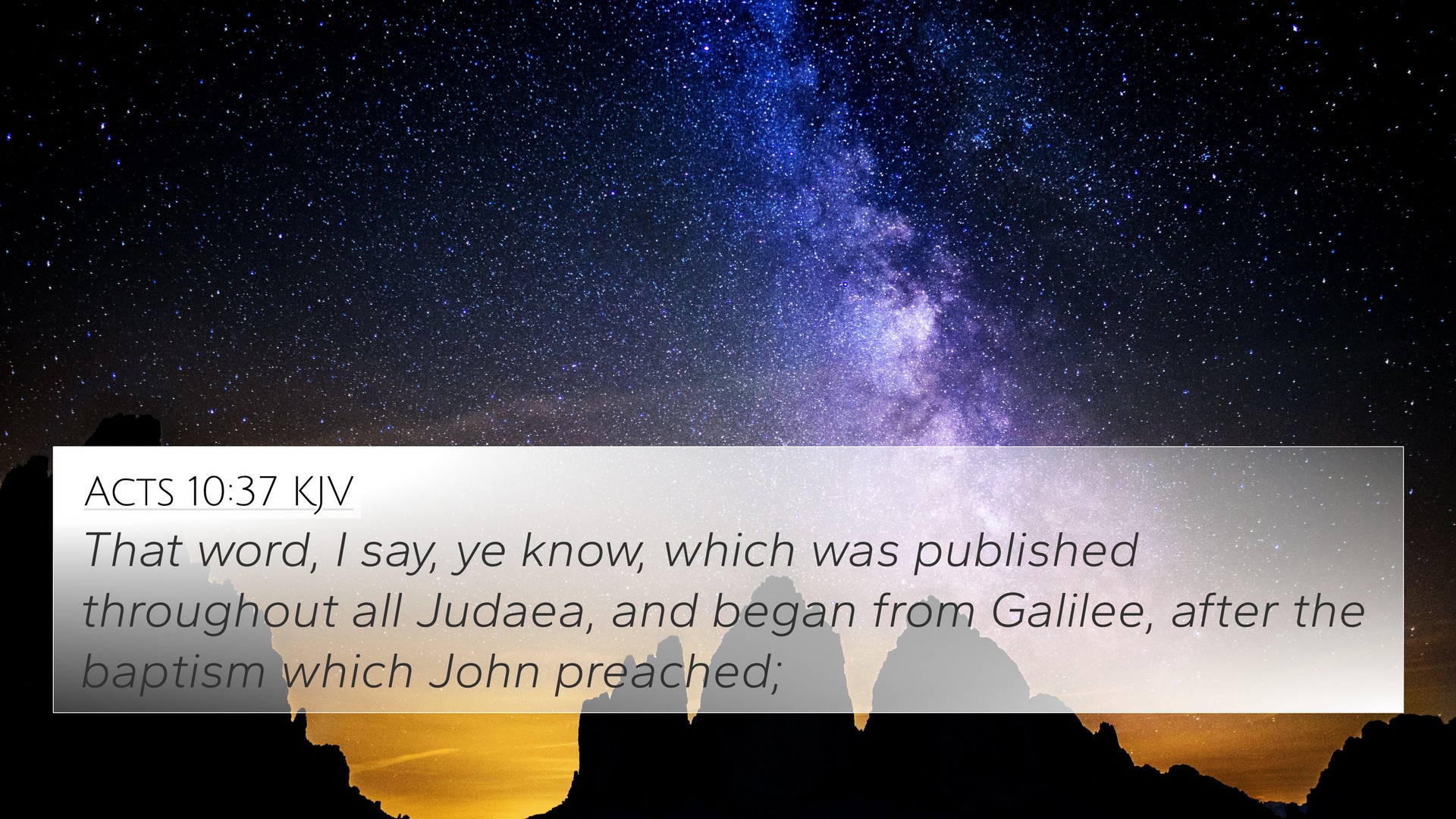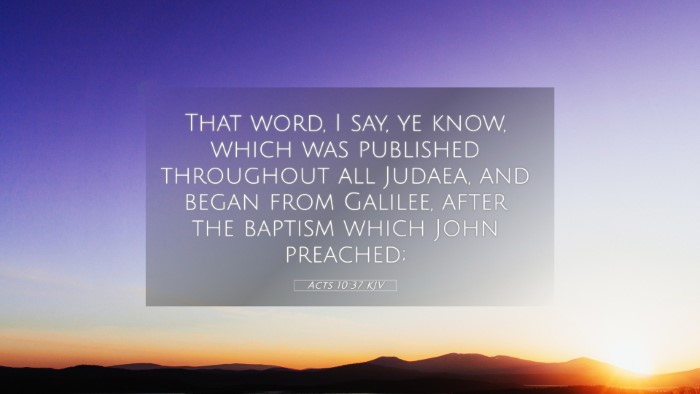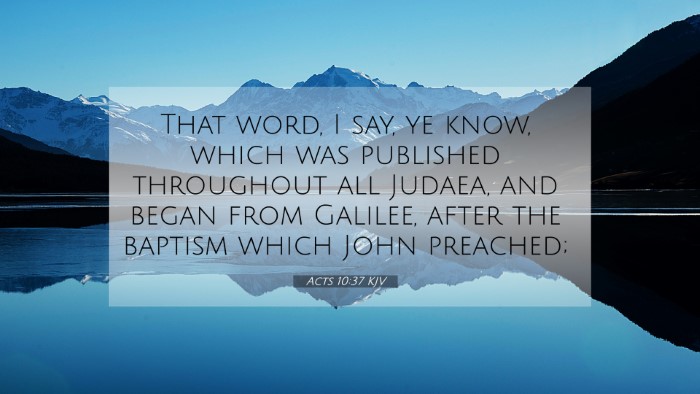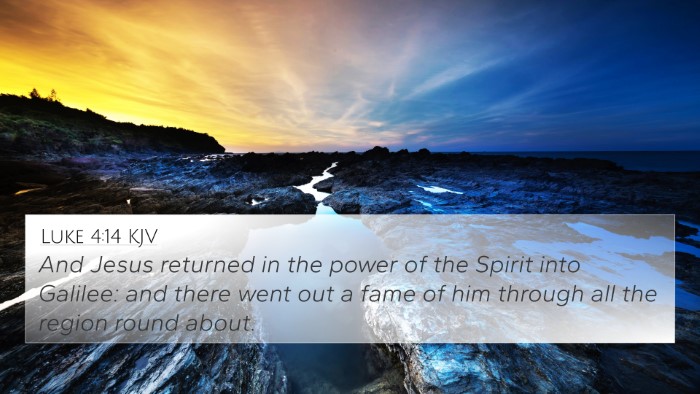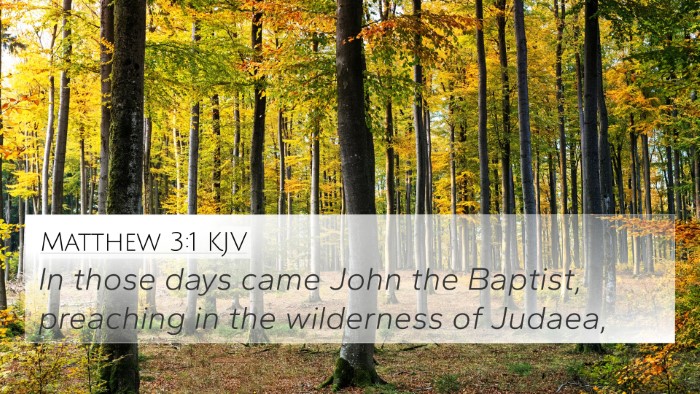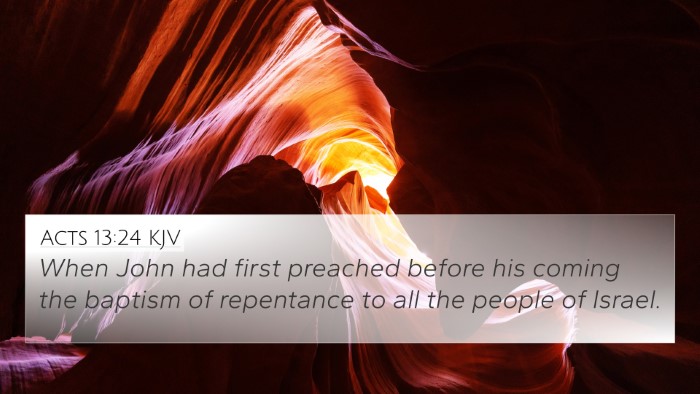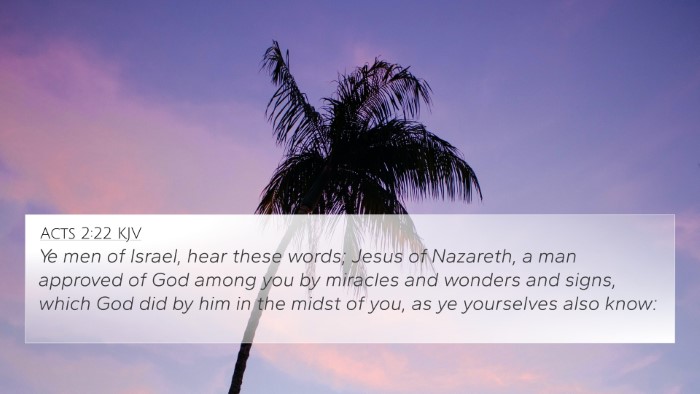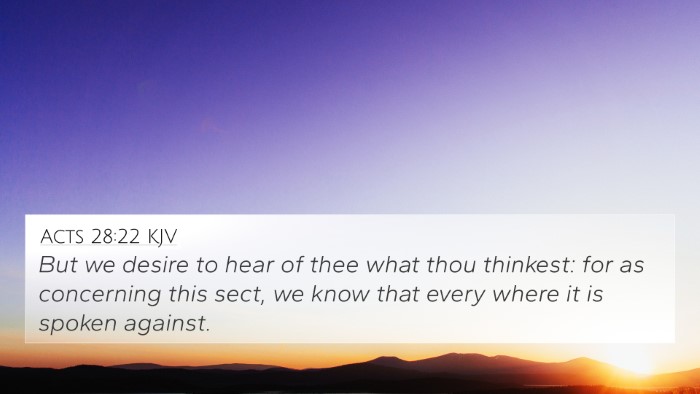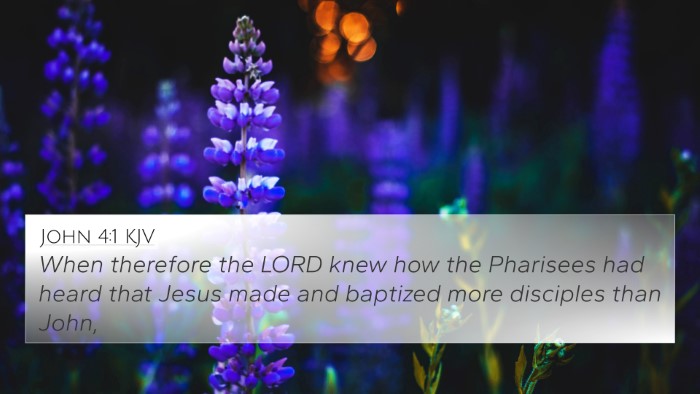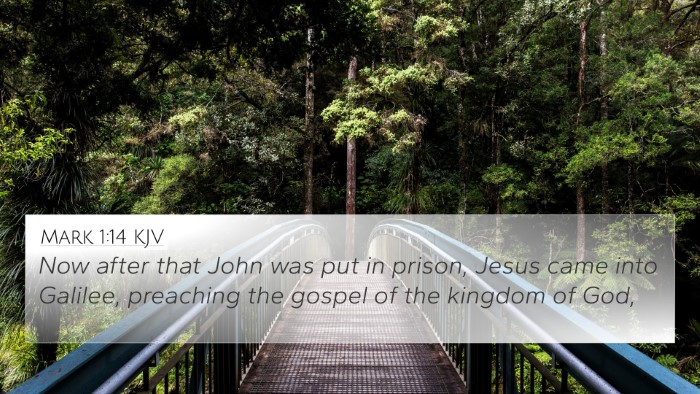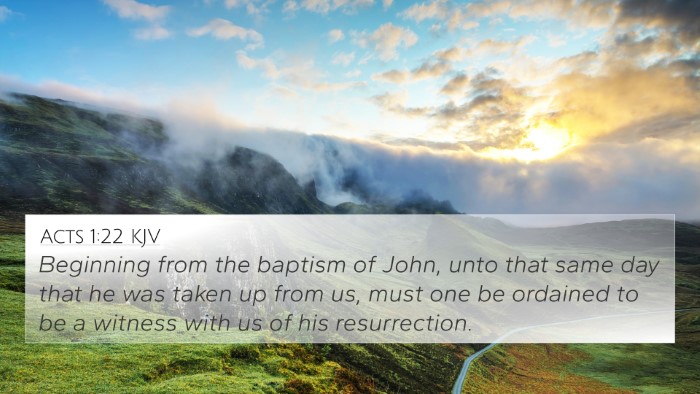This verse is situated in a pivotal moment in the Book of Acts, where Peter speaks to Cornelius and his household, marking a significant transition in the early Church regarding the outreach to the Gentiles. The verse outlines the dissemination of the Gospel following John the Baptist's ministry and highlights the geographical significance of its spread.
Significance of the Verse
- Historical Context: Acts 10 describes the conversion of Cornelius, a Roman centurion. This event illustrates the expansion of the Gospel message beyond the Jewish community.
- Preceding Baptism: The mention of baptism in this context relates to the commissioning of Jesus’ ministry after John’s role in preparing the way.
- Geographical Reference: By stating "throughout all Judaea," the text emphasizes the widespread nature of Jesus' teachings and the significant impact he had in various regions.
Insights from Public Domain Commentaries
Matthew Henry: He emphasizes the importance of Peter’s message as a reminder of the transformative work of Christ. Henry notes that the spread of the Gospel is not only a testament to its truth but also to its divine origin, starting from a humble place like Galilee.
Albert Barnes: Barnes focuses on the implication of knowledge among the listeners. He discusses how Cornelius and his household already had a background understanding of the events Peter references, which shows they were spiritually prepared to receive the message of Christ.
Adam Clarke: Clarke analyzes the structure of the verse, emphasizing the significance of progression in the preaching of the Gospel. He notes the reference to John’s baptism as a precursor to the authority of Jesus’ ministry, setting the stage for the fulfillment of God's promises through Christ.
Bible Verse Cross-References
- Matthew 3:11 - John the Baptist introduces the theme of baptism.
- Luke 4:14-15 - Jesus begins His ministry in Galilee.
- Mark 1:9 - Jesus is baptized by John in the Jordan.
- Acts 1:8 - The command to witness to the ends of the earth.
- Acts 2:14 - Peter stands up and addresses the crowd on Pentecost.
- Acts 28:28 - The message of salvation is sent to the Gentiles.
- John 1:7-8 - John’s purpose in coming to testify about the light.
- Luke 7:29-30 - God's approval of John's ministry.
- Romans 1:16 - The Gospel being the power of God for salvation to everyone who believes.
- Galatians 3:28 - The inclusivity of the Gospel for all people.
Connections Between Bible Verses
The connections highlighted in Acts 10:37 resonate with various themes throughout scripture, particularly the inclusivity of the Gospel and the significance of baptism. The insights provided by commentators align with understanding these themes more deeply:
- Identifying Connections: The verse links the Old and New Testament through the figures of John the Baptist and Jesus, showing God’s cohesive plan for redemption.
- Thematic Bible Verse Connections: The themes of proclamation and preparation in preaching the Gospel find parallels across various texts and books within the Bible.
Tools for Bible Cross-Referencing
For those engaged in the study of Acts 10:37 and looking for a deeper understanding, various tools and methodologies can enhance the analysis:
- Bible concordance: An invaluable resource for finding specific words and phrases across scripture.
- Bible cross-reference guide: Helps to explore the relationships between verses for thematic studies.
- Comprehensive Bible cross-reference materials: Offer systematic insights that bridge themes and concepts throughout the scriptures.
Cross-Referencing Bible Study Methods
When studying Acts 10:37, consider using structured approaches:
- Cross-reference Bible study: Identifying verses that act as parallels to draw thematic conclusions.
- How to use Bible cross-references: Practicing this skill enhances your understanding and helps contextualize Acts 10:37 in a broader biblical narrative.
Conclusion
Acts 10:37 serves as a reminder of the decisive moment in the New Testament when the Gospel transcended ethnic boundaries. By exploring the insights from Matthew Henry, Albert Barnes, and Adam Clarke, along with a plethora of scriptural cross-references, one gains a broader appreciation of the theological implications this verse presents. This encourages not only an understanding of a pivotal biblical event but also inspires a dedication to studying the interconnected nature of God's Word.
